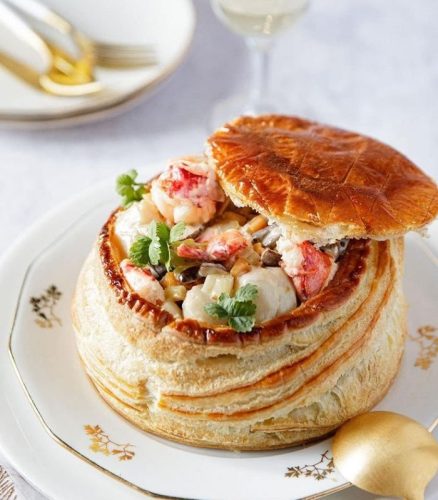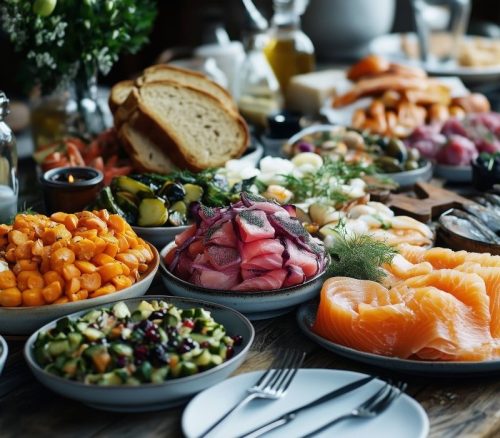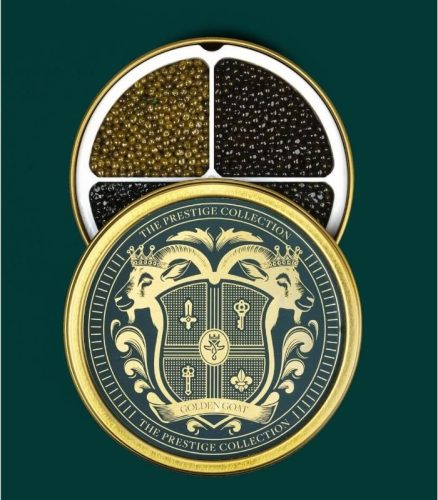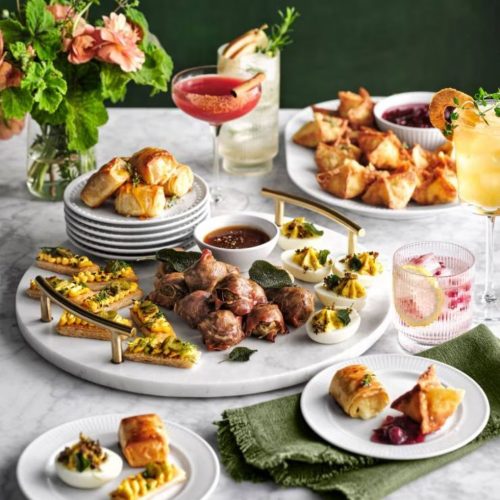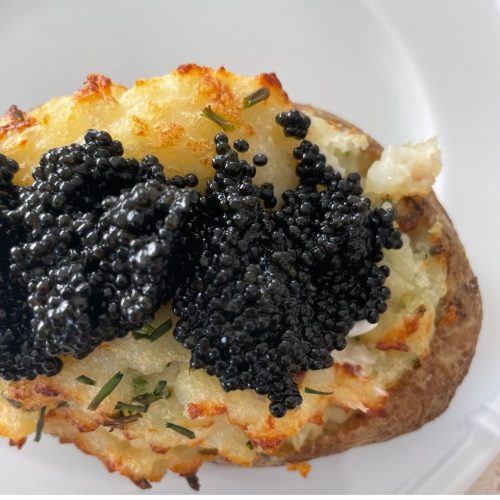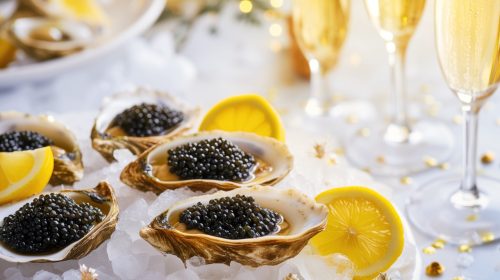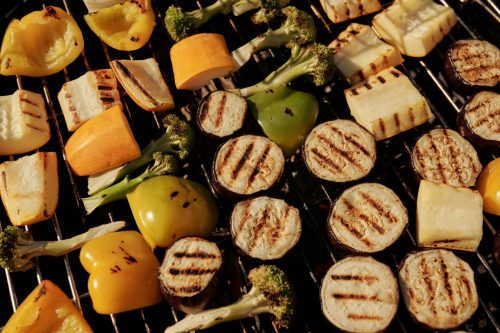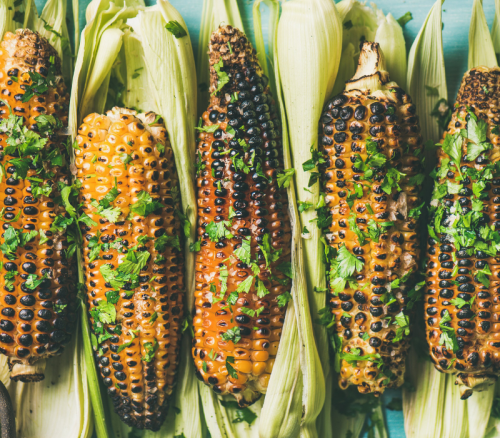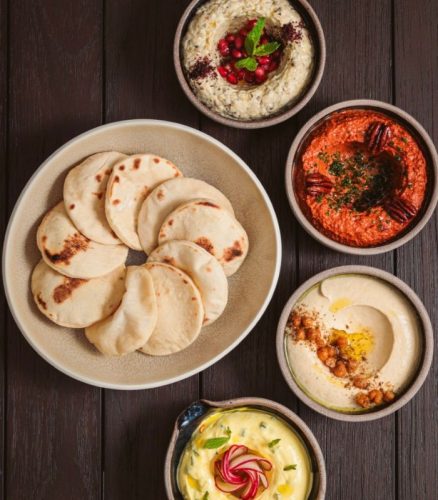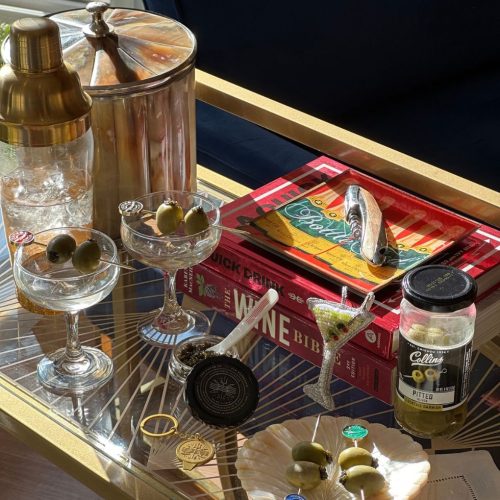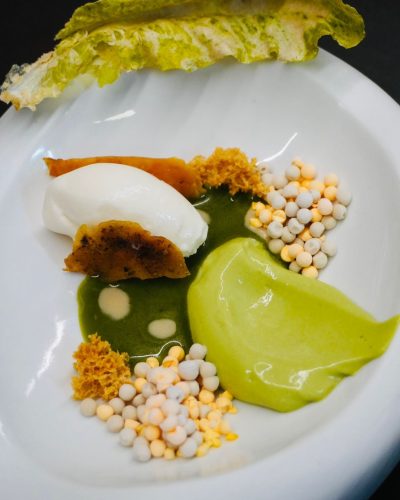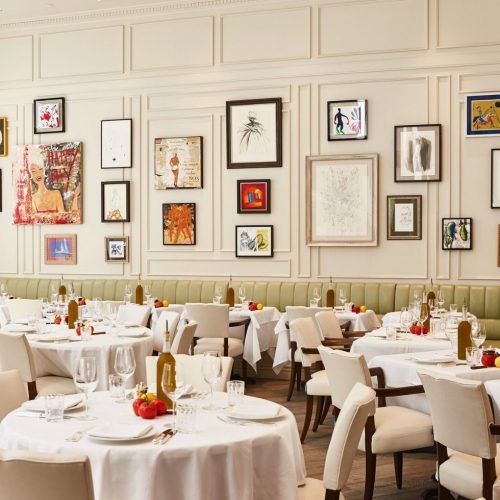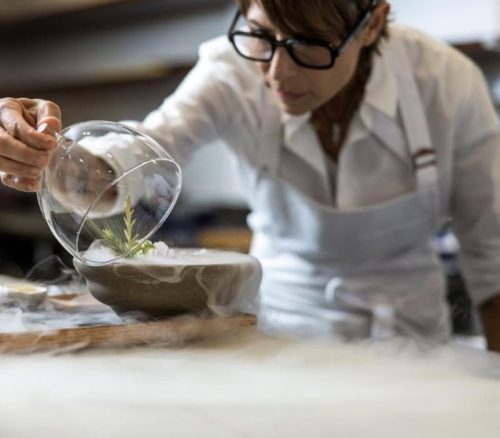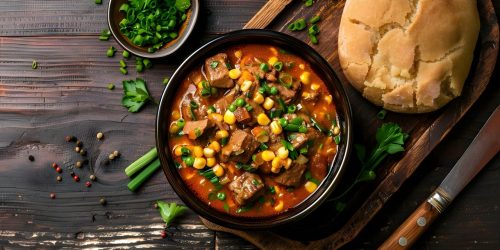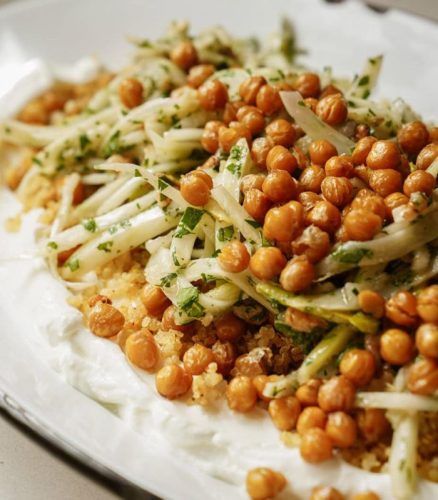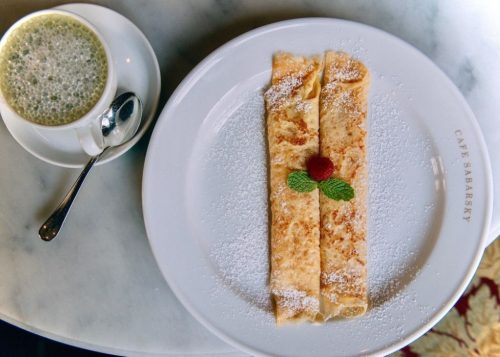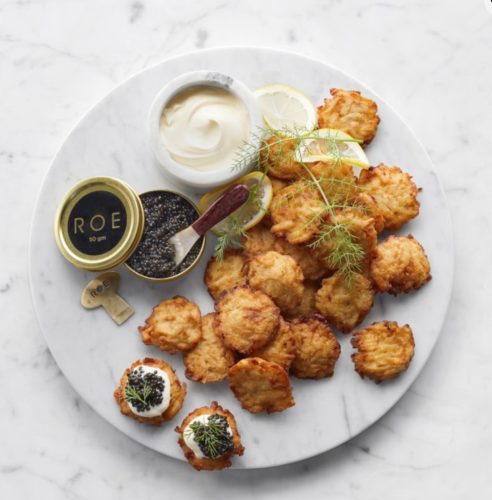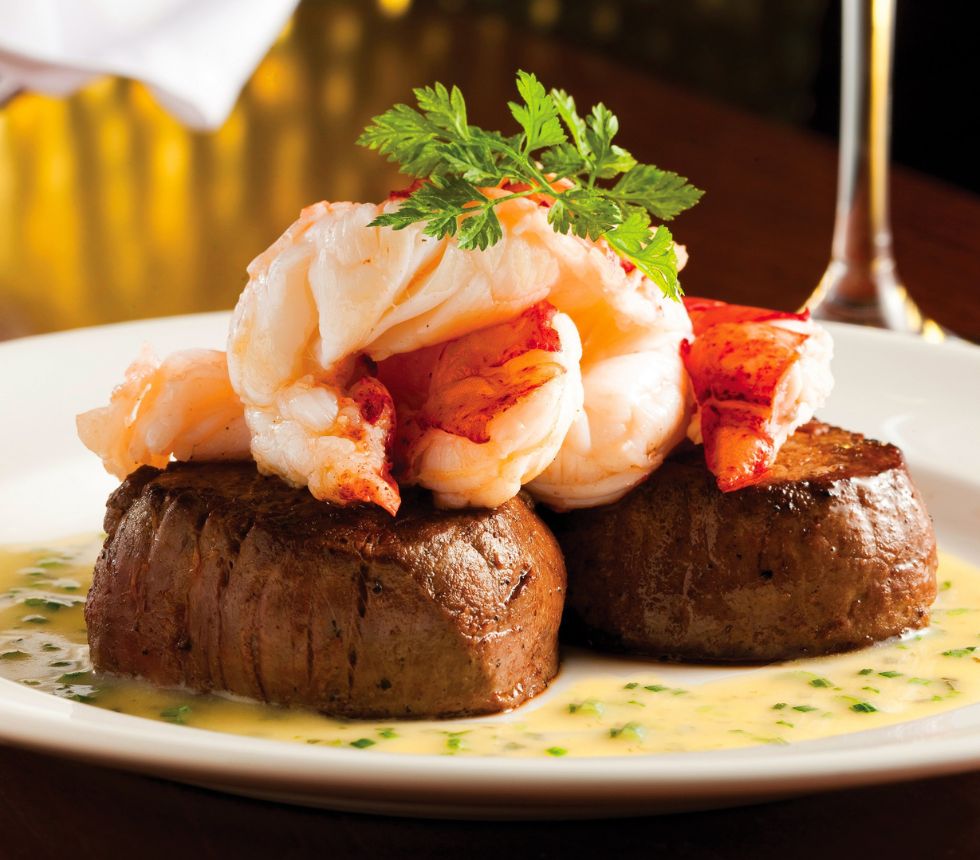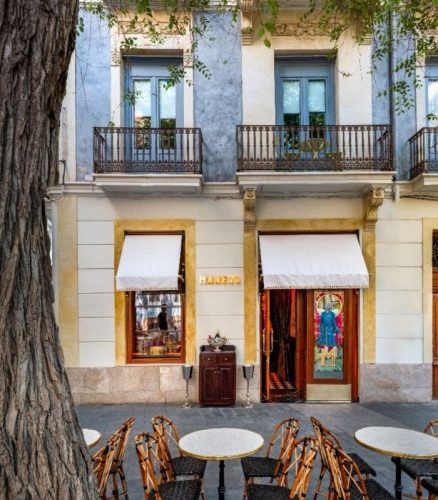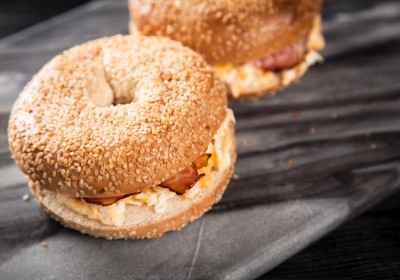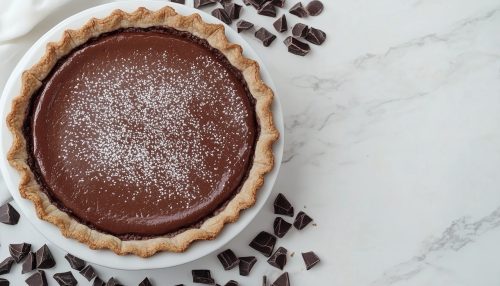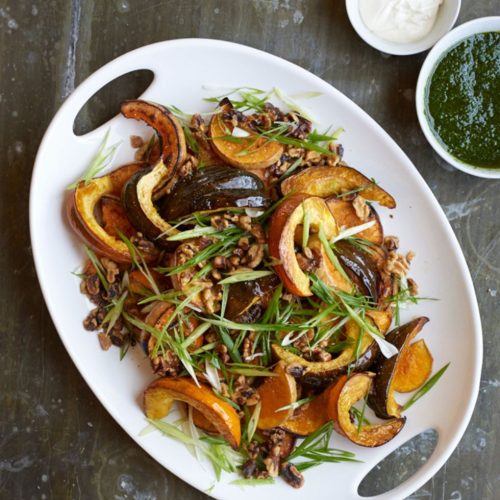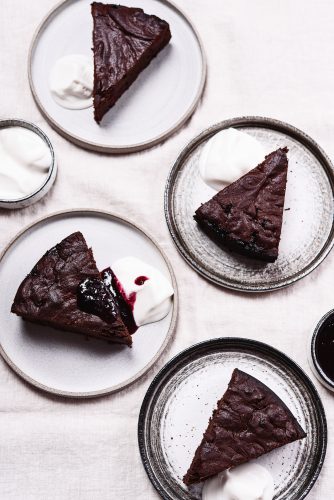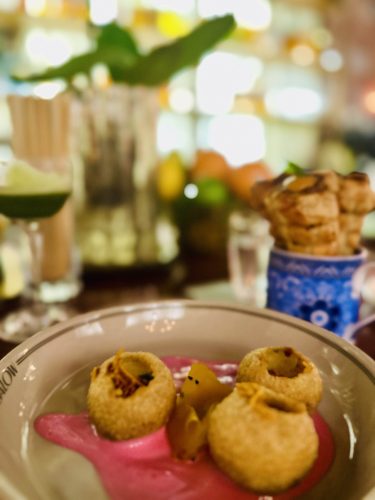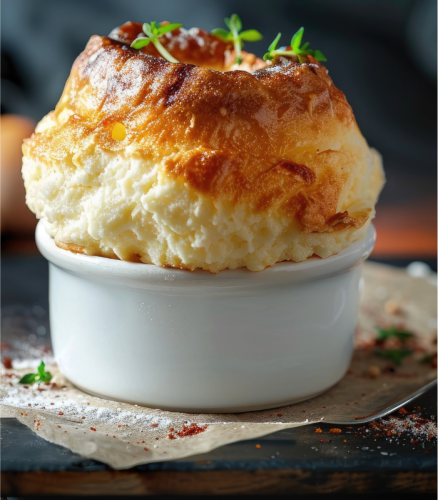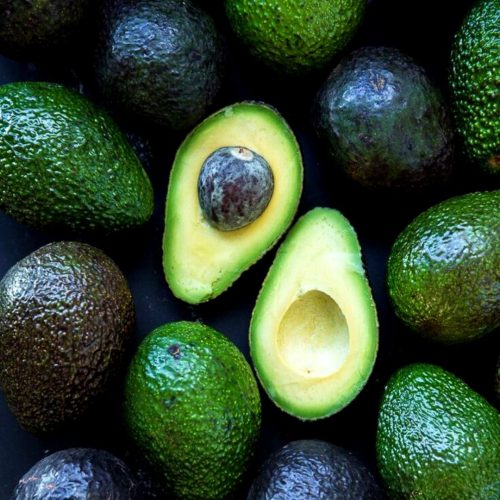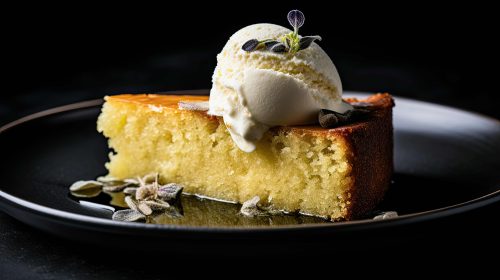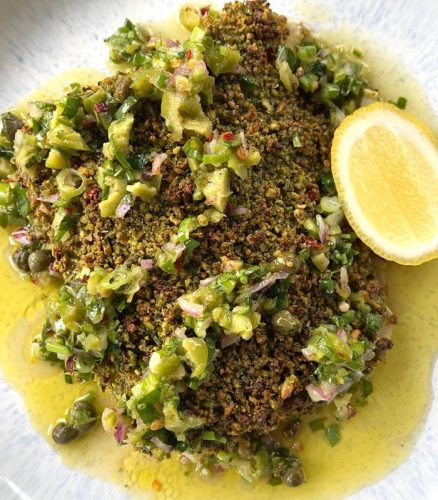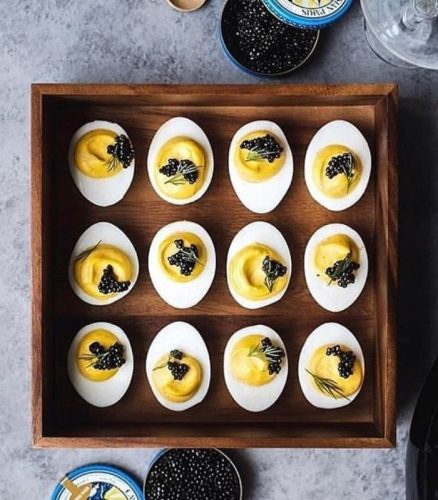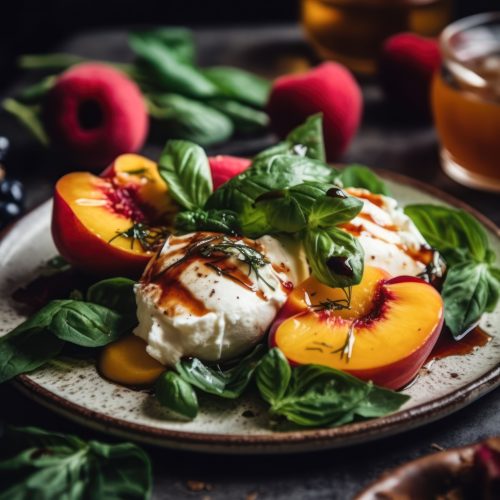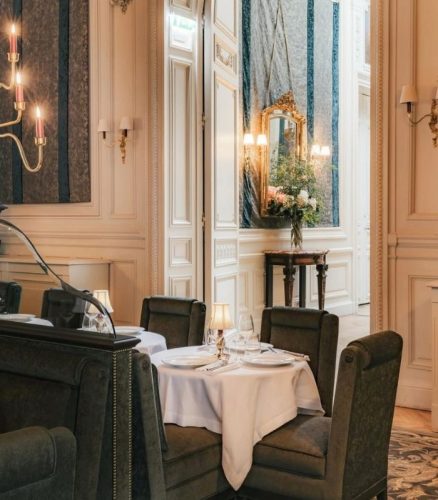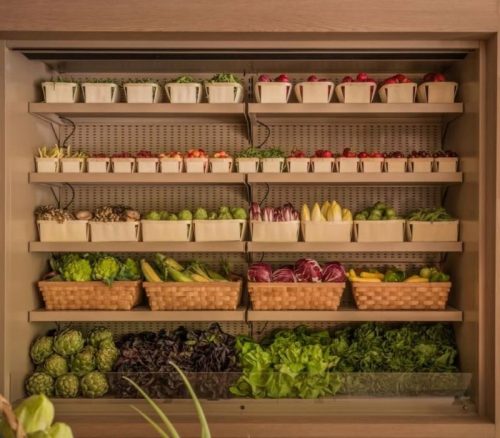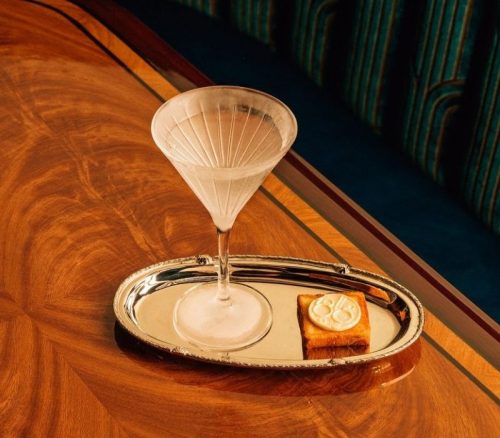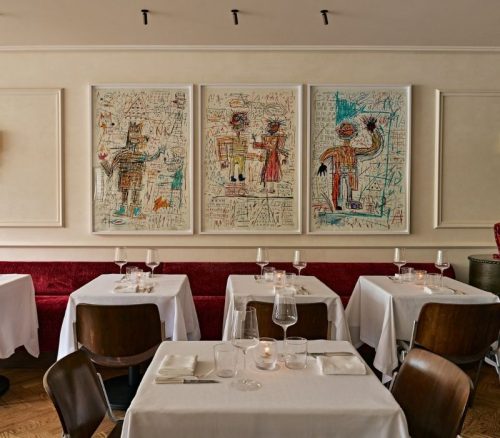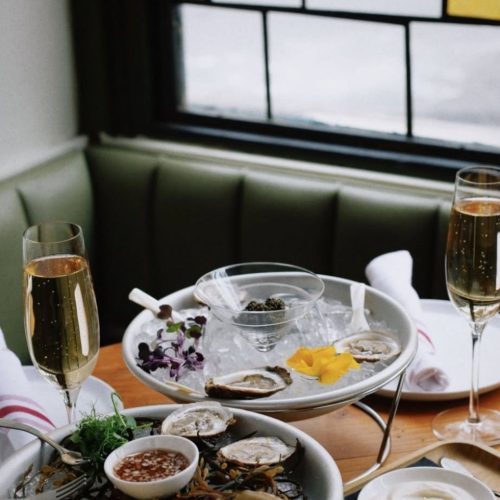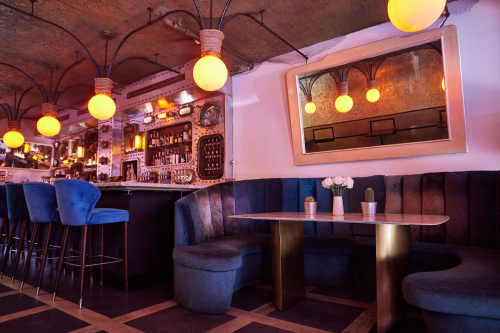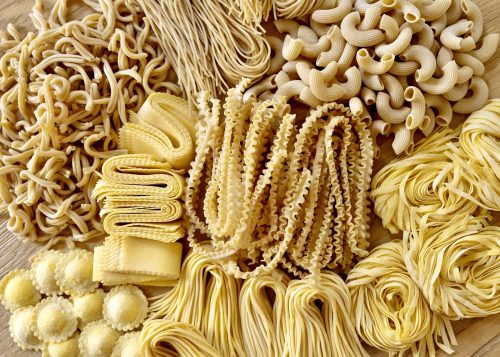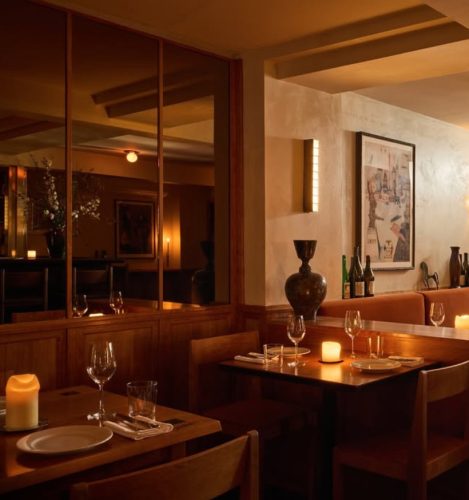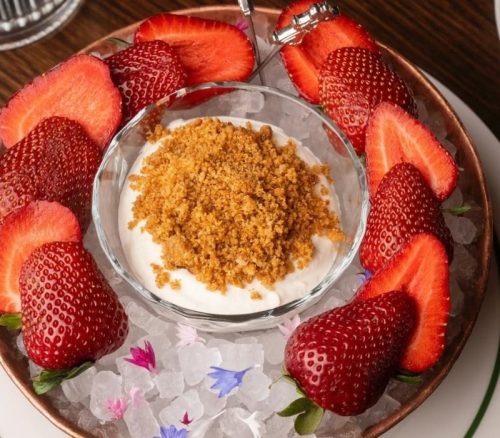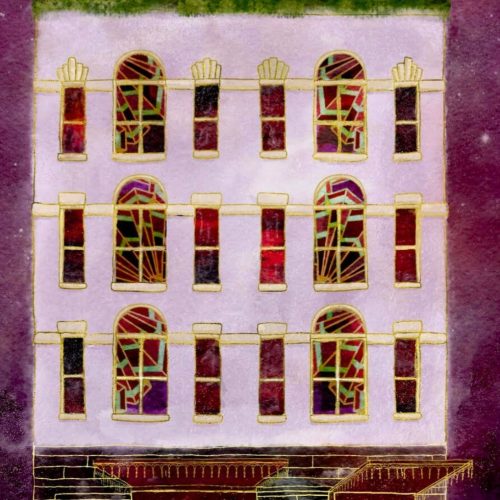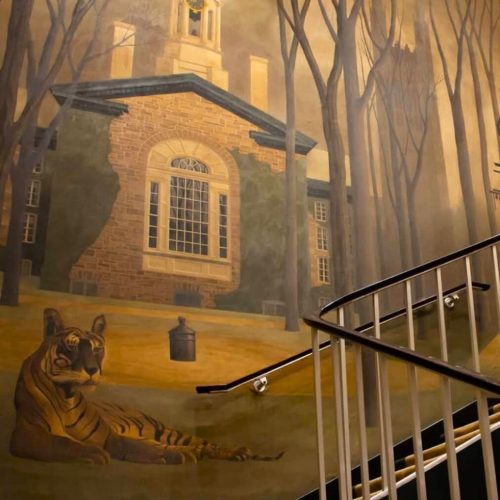Sometimes the best dinners are the ones that you make at home. Whether for this Valentine’s Day or just to enjoy life, surf and turf makes a statement. These are the surf and turf recipes that should be your go-to for chateaubriand and butter-poached lobster.
As a culinary concept, chateaubriand is sort of undefinable. Depending on who you ask, it can refer to either the cut of steak, or the method of roasting. Either way, we love any dish with a good folklore behind it. Legend has it that the dish is named after French aristocrat Francois-René de Chateaubriand, whose chef is credited with its invention. Originally, chateaubriand referred to a large cut of tenderloin, prepared by layering it between two lesser pieces of steak. The beef was then seared, charring the outer steaks (to later be discarded) and leaving you with a perfectly tender roast.
It’s a style of cooking that would horrify any 21st century composter — creating food waste just for the point of extravagance. Fortunately, chateaubriand is no longer prepared this way, and the dish now focuses more on the specific cut of meat. The modern chateaubriand is made with a thick center cut of beef tenderloin, basted in butter and served with Béarnaise sauce. Its methods may have changed, but this classic meal hasn’t lost one bit of decadence.
Making chateaubriand on its own is impressive enough, but it’s Valentine’s Day, and there’s no better excuse to go all out. We’re pairing our steak with butter-poached lobster, because why not? And for the starch: duck fat fries and Béarnaise sauce. It’s like steak frites and an extra bougie lobster roll, all in one.
The Perfect Surf & Turf
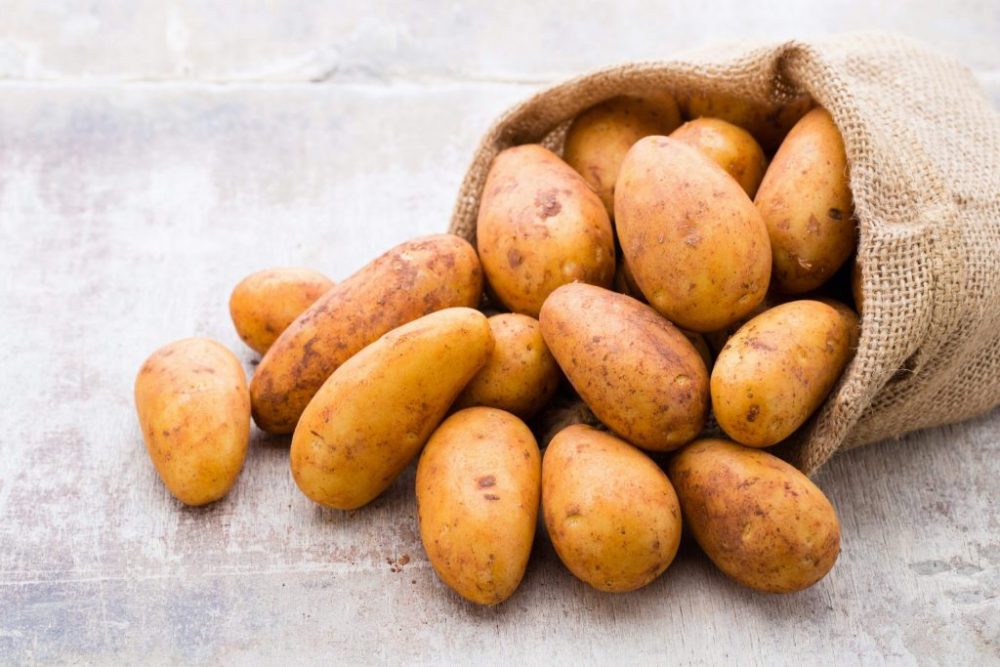
Ingredients
For the fries:
5 lb russet potatoes
Salt
¼ cup vinegar
3 cups duck fat
8 cups canola oil
1 tsp baking soda
For the demi-glace
1 bay leaf
1 bunch fresh thyme
8 fresh parsley stems
10 whole peppercorns
2 tbsp salted butter
½ cup diced yellow onions
2 ribs of celery, diced
2 carrots, diced
¼ cup all purpose flour
5 cups low-sodium beef stock
Salt to taste
For the chateaubriand
1 lb beef tenderloin, center cut
3 tbsp salted butter, softened
2 tbsp olive oil
1 shallot, diced
½ cup dry red wine
½ cup demi-glace
1 tbsp fresh tarragon, chopped
Salt to taste
Freshly ground black pepper, to taste
For the butter-poached lobster:
2 tbsp water
1 stick cold butter, divided into 1 tbsp pieces
3 shucked lobster tails
For the Béarnaise:
2 sticks salted butter
1 minced shallot
Salt to taste
Freshly ground black pepper to taste
¼ cup champagne or white-wine vinegar
¼ cup dry white wine
3 large egg yolks
1 tbsp fresh lemon juice
1 tbsp finely chopped tarragon
Directions
For the duck fat fries:
Begin by preparing your fries, as they’ll need to sit overnight. First, peel the potatoes and cut them into ⅛-inch matchsticks. Transfer the cut potatoes to a large bowl of ice water, and let soak for 20-30 minutes.
After the potatoes have soaked, boil them in a mixture of water, vinegar and baking soda for 7 minutes. When you stick a knife through the center of the potato, there should be no resistance. While the potatoes boil in the water and vinegar mixture, add your canola oil to a heavy-bottomed pot and bring to 275 F.
Once the potatoes have boiled, drain and dry them carefully with paper towels. Working in batches, add the potatoes to the oil and fry for 7-8 minutes, just until they begin to firm up. Repeat this process with the remaining potatoes. Drain well on paper towels, and bring the fries to room temperature before transferring to the fridge. After the fries have cooled completely in the fridge, transfer them to the freezer and freeze overnight.
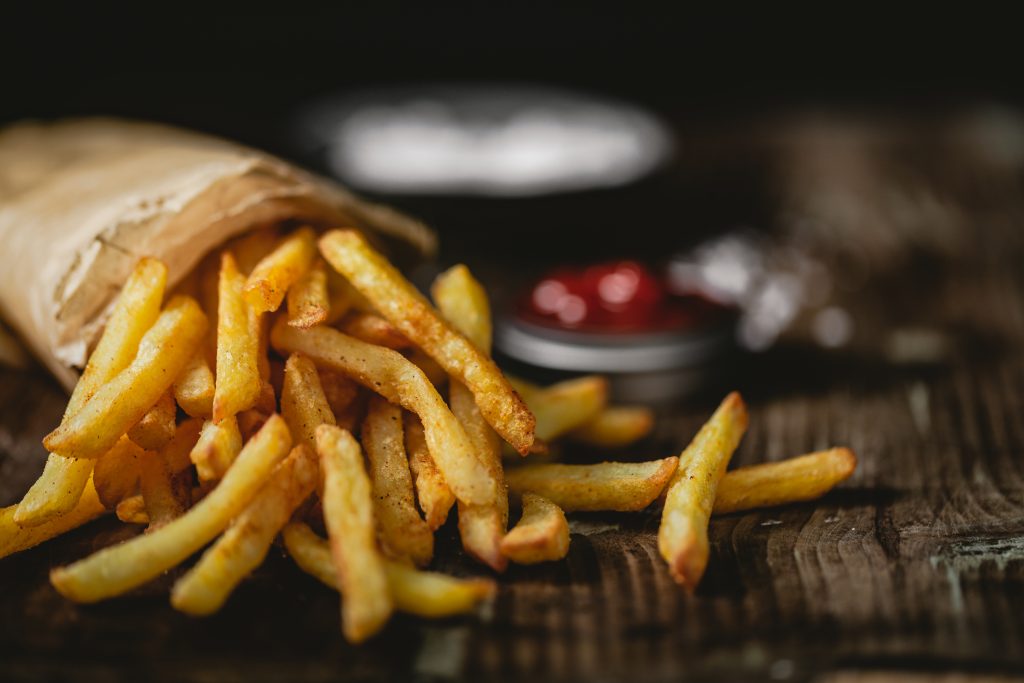
The next day, heat the duck fat in a heavy-bottomed pot or saucepan, to 375 F. Ideally, there should be about 3-4 inches of duck fat. You can also supplement with more canola oil if necessary. Carefully add the frozen fries to the duck fat and cook until golden and crispy, about 8 minutes. Once cooked, transfer to a paper-towel lined plate or rack. Season with sea salt or truffle salt, and enjoy.
For the demi-glace
First, place the bay leaf, thyme, parsley stems, and peppercorns on a piece of cheesecloth. Tie the cloth into a bundle with the herbs inside, using cooking twine. This will be your sachet.

Next, in a dutch oven or heavy-bottomed pot, heat the butter over medium heat. Add the onions, celery and carrots, sautéing for about 5 minutes. Once the onions are translucent, sprinkle in the flour and stir to form a paste. Cook the flour off for about 3 minutes until it has slightly browned. Next, whisk in 3 cups of beef stock and bring to a boil over medium-high heat. Once boiling, reduce to a simmer and add the sachet. Let simmer for about 20 minutes, or until the mixture has reduced by about a third.
Remove from the heat and retrieve the sachet to set aside. Carefully strain the sauce, using a strainer or colander lined with cheesecloth. Use a spoon to gently drain the liquid from the remaining mirepoix.
Pour the strained sauce back into the pot, along with the remaining 2 cups of stock and the sachet. Bring the mixture back to a boil, then lower to a simmer. Let cook for an additional 50 minutes, or until the sauce has reduced by half.
Discard the sachet and strain the sauce through a new piece of cheesecloth. Reserve and set aside for later.
For the chateaubriand
Now you can get started on the chateaubriand. Preheat your oven to 375 F and generously season the beef with salt and pepper on both sides. Leave at room temperature for one hour before cooking.
Combine the olive oil and 2 tbsp butter in a large cast iron skillet over medium-high. Let heat until the butter is melted and bubbly. Place the seasoned meat in the pan and sear for 3 minutes on one side, without moving the meat. Use tongs to carefully slip to its side, browning for 3 more minutes. Repeat this process on all exposed surfaces of the meat until you have a beautifully golden crust.
Transfer the tenderloin to a rack placed over a roasting pan, and put in the oven. Make sure to reserve any excess juices in the skillet for the sauce. Roast the beef to your desired preparation, about 15 minutes for medium-rare and 20 minutes for medium. Medium-well will take about 23 minutes.
Once the meat is done, remove from the oven and transfer to a serving platter. Lightly tent the meat with foil and let it rest for about 15 minutes.
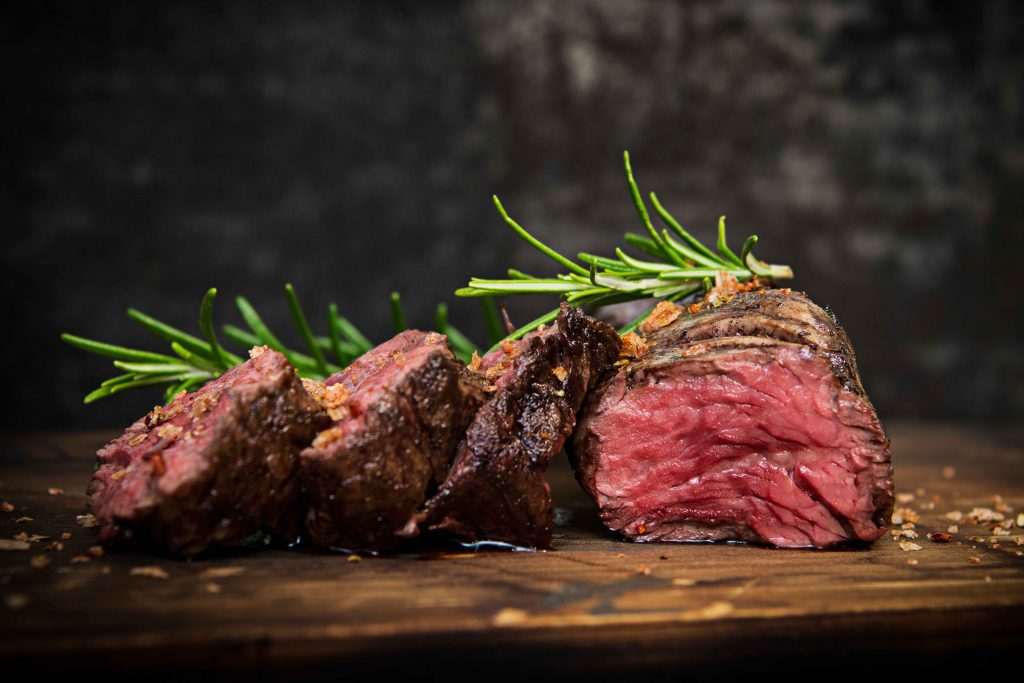
While the tenderloin rests, get started on your red-wine sauce. In the skillet with the reserved steak juices, sauté the minced shallot over medium heat. Once the shallot is soft and translucent, add the wine and bring the sauce to a boil. Use a wooden spoon to scrape up any browned bits on the bottom of the pan, mixing them into the sauce. Continue to boil the sauce until it’s reduced by half, then mix in the demi-glace sauce. Continue boiling until the mixture is slightly thickened. Next, remove from the heat and stir in the tarragon and remaining tbsp of butter. Taste the sauce and season with salt and black pepper as needed.
Slice the meat on the diagonal and serve with a drizzle of the wine sauce.
For the butter-poached lobster:
In a medium saucepan, bring the water to a simmer over medium heat. Whisk in 1 tbsp of butter, adding another piece of butter as each piece melts. Repeat this process until all the butter is gone, making sure to not let it come to a boil.

Once all the butter is in, add the defrosted, raw tails. Cook for 5-7 minutes, turning the tails in your butter mixture. If the butter starts to boil, reduce heat as necessary. Your lobster tails should have an internal temperature of 130-135, so feel free to check with a thermometer to make sure they aren’t overcooking. Once done, serve with the chateaubriand and fries.
For the Béarnaise:
First, melt 1 tbsp butter in a small saucepan over medium heat. Once melted, add the shallots and stir to coat with butter. After the shallots are softened (about 3 minutes) stir in the vinegar and white wine. Reduce the heat to medium-low and cook until the liquid has evaporated, about 3 more minutes.
Reduce the heat to low and continue to sauté the shallots for an additional 5 minutes, stirring frequently. Next, melt the remaining butter in another small saucepan over medium heat. Cook until the butter is foamy, then transfer to a glass measuring cup.
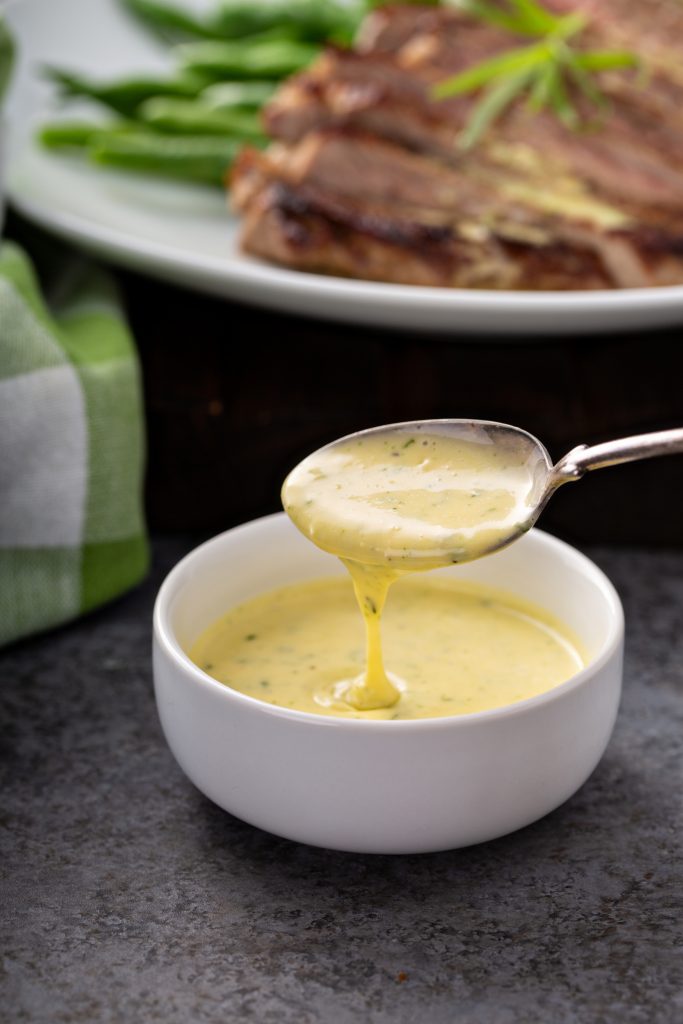
In another larger glass measuring cup, puree the egg yolks and lemon juice with an immersion blender until smooth. You can also use a food processor for this step. Next, with the blender running, slowly pour in the warm butter into the yolk and lemon mixture. Continue pouring the butter in a slow, steady stream, blending until a smooth and creamy sauce forms. This should take about 3-4 minutes. Add in the tarragon and the shallot-wine reduction. Give everything another blend to combine, and season to taste. Transfer the sauce to a serving bowl and enjoy with your steak, fries, and lobster.

